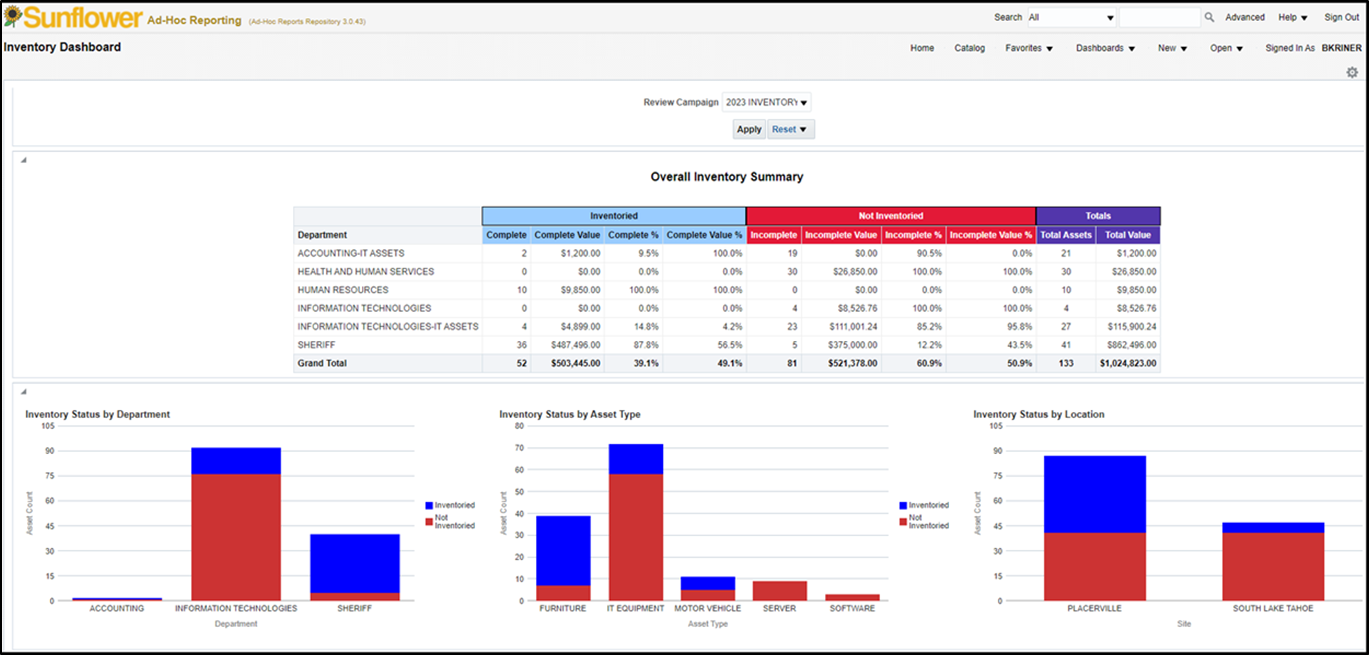Asset management is often associated with hands-on tasks such as issuing items from stock, performing maintenance or managing logistics. However, asset managers often spend more time analyzing data and asset information than physically managing assets. Artificial intelligence (AI) may provide an answer.
Generating concise, accurate information from a vast sea of data can be extremely challenging. Asset managers often spend hours parsing spreadsheets, writing complex database queries or working in business intelligence tools to get the information they need. Three types of AI capabilities are poised to help asset managers quickly gain actionable insights from asset data.
Generative AI
Generative AI produces new content based on a set of data. A generative AI application is “trained,” or exposed to the data in the asset management system, which helps it produce relevant information when interacting with users. For example, a user could make a simple request, such as “create a dashboard for this year’s physical inventory progress by department, asset type and site,” and be presented with something resembling the picture below:
A complex dashboard like this might take hours to put together using a traditional business intelligence tool. The creator would need to understand how to write database queries, apply filters and design graphical views. Someone with only a layperson’s knowledge of business intelligence tools would be able to generate this information in a few seconds using an AI application. This technology allows the asset manager to quickly understand gaps in the physical inventory process and take prompt action instead of spending time compiling data.
Natural language chatbots
A natural language chatbot is another AI application that holds great promise for asset managers. Rather than generating visual content, this technology generates text responses to natural language questions such as “what assets are coming due for calibration in the next 90 days?” Like generative AI, chatbots can be trained on the data in the asset management system to provide human-like responses to these queries in a matter of seconds. Chatbots are an excellent choice for providing specific, concise answers instead of generating a more information-rich artifact like a dashboard or report.
They also allow users to ask follow-up questions based on previous answers. In the calibration example, a user might be able to ask, “which of those assets are located at our Dallas site?” The chatbot can provide an immediate and direct answer, avoiding the need to generate a report and apply filters until you arrive at the specific information you need.
This technology also offers the intriguing possibility of being trained on data from separate sources such as the asset management and financial systems. Searching data across multiple systems typically requires costly software integration or joining data sets in a business intelligence tool and creating painstaking queries to generate the required information. A chatbot trained on both the asset management and financial systems would be able to quickly answer queries such as, “what is the accumulated depreciation of all assets that have not been located in the current physical inventory cycle?”
Computer vision
The third AI technology that offers great benefits for asset management is computer vision, which derives information from images, videos and other visual content. Asset managers can take pictures or videos of large areas and identify specific assets by entering a description of the item, or text such as a serial number, into the computer vision application.
For example, a drone could take images of a large parking area for law enforcement vehicles that have unit numbers painted on top. An asset manager searching for a specific vehicle could search the images for that unit number and quickly identify the asset’s location within the parking area.
Computer vision could also be used to automatically assess images of assets to detect damage or wear to facilitate timely maintenance and reduce downtime. This technology could also be used to predict when assets might fail in advance, enabling more efficient preventive maintenance practices.
Early stages of high-potential application
The ability of computer systems to create meaningful content by interacting with humans in natural ways is groundbreaking.
We are only beginning to see the potential for AI to revolutionize many fields. Even at this early stage, it is clear that applications such as generative AI, natural language chatbots and computer vision will play a critical role in asset management.
Artificial intelligence offers significant efficiency gains in the ability to analyze data to make operational decisions about the control, use and maintenance of assets to better support your organization’s mission.
For more information about CGI’s asset management solutions, visit our Sunflower pages.








